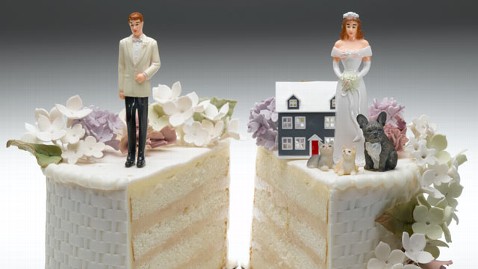The End of Marriage? Husband-Wife Households at Record Lows: 2010 Census

(Image Credit: Jeffrey Hamilton/Getty Images)
Ozzie and Harriet step aside. The proportion of homes in America with husband-wife couples has now fallen below 50 percent, the lowest since the Census Bureau began tabulating this family data in 1940.
New census 2010 figures, released today, reveal that 48 percent of all households include a married husband and wife, compared with 52 percent in 2000. That's down dramatically from the peak. In the 1950 census, 78 percent of all households in America mirrored the Ozzie and Harriet mold, with a husband and wife in the home.
There is wide variation from state to state. Utah has the highest proportion of husband-wife households, at 61 percent. The lowest numbers are in New York and Louisiana, with 44 percent each.
There are more interracial married couples than a decade ago. Their numbers jumped 28 percent since 2000.
As you might expect though, with the overall percentage of married couples declining, the percentage of unmarried couples living together is increasing.
It is possible that this also reflects an increase in the average age at which couples first marry. According to a study from the Pew Research Center , the average age for men is 28.7 years and for women, it's 26.5. Compare that to 1960, when that age for both men and women was early 20s.
Unmarried couples make up less than 7 percent of all households, but their numbers still jumped 40 percent from 2000. The largest increase in that group was same-sex partner homes, which skyrocketed 80 percent in the past decade. They make up less than one percent of all households, but in 2010, nearly 650,000 households identified themselves as same-sex partner homes.
Other types of living arrangements are also on the upswing. There are more people living alone. Homes with just one person made up nearly 27 percent of households in 2010. Atlanta and Washington, D.C., are the two cities with most residents living by themselves - about 44 percent in each. The Census Bureau says that probably reflects young single people looking for job opportunities.
Another growing phenomenon is the number of male homeowners living without a spouse, but with other family members. Half of these are dads with their own children. The others might include an adult son whose parent moves in, or a brother housing another brother. Think "Two and a Half Men." This category of home increased by 19.05 percent, from 4.2 percent of households in 2000 to 5 percent in 2010.
It's also more common to find multiple generations living together. In 2010, there were 5 million families where three or more generations lived under the same roof, about a million more than a decade before.
The new census numbers also reflects the graying of America. In 2010, a quarter of all households included someone over age 65. The two states with the highest percentage of elderly households were Florida and Hawaii. Both, of course, offer nice warm weather for retirees. In Alaska, on the other hand, only 16 percent of households included someone over age 65 - the lowest percentage of any state.
The 2010 census is "continuing trends we've seen for quite a while," according to Rose Kreider, chief of the Fertility and Family Statistics Branch at the U.S. Census Bureau.